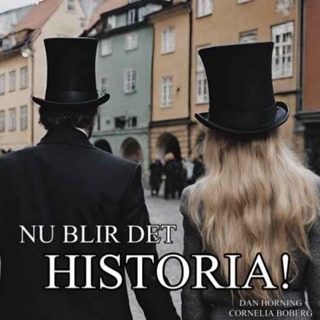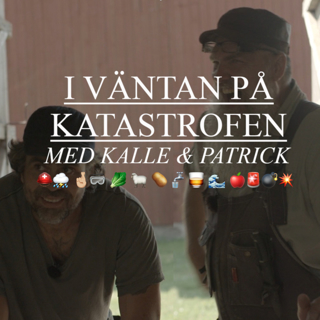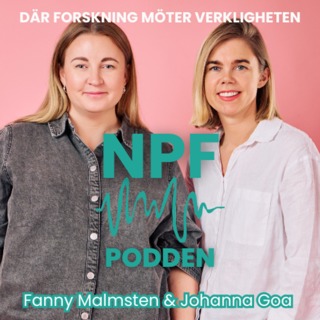
22. Tasting a Full-Bodied Red Wine Using the WSET SAT
Resources & Links Sign up for the Wine Educate Newsletter: www.wineeducate.com/newsletter-signup How to Contact Us Website: www.wineeducate.com Email: joanne@wineeducate.com Instagram & Facebook: @wineeducate Episode Description In this episode of Wine Educate, host Joanne Close leads a guided tasting of a full-bodied red wine using the WSET Systematic Approach to Tasting (SAT). This episode builds on the Structural Components Series, helping students apply what they've learned to a real-world tasting scenario. Joanne walks through the tasting process at WSET Levels 1, 2, and 3, explaining how assessment evolves with each level. She discusses Carménère from Chile, a highly testable wine known for its distinctive structure and flavor profile, and shares valuable tips for calibrating your palate. Follow along with Level 3 Bootcamp: Instagram @wineeducate (#L3Boot2025) What's in This Episode? 1. WSET Level 3 Bootcamp Update Joanne and her students are in France for an intensive Level 3 study session at Château Camplazens. The group will take a full-length practice exam to refine their time management and essay writing skills. After the exam, they'll celebrate with lunch at La Cranquette in Gruissan. Follow along on Instagram @wineeducate for study tips and updates. 2. Introduction to the Tasting Exercise This tasting applies everything covered in the Structural Components Series. The wine selected is the 2020 Apaltagua Envero Gran Reserva Carménère from Colchagua Valley, Chile. Carménère is a highly testable wine at WSET Levels 2 and 3. 3. Understanding Carménère Originally from Bordeaux, Carménère thrives in Chile, where it produces full-bodied, high-tannin wines. Key characteristics include: High tannins, high acidity, and high alcohol Black fruit (blackberry, black plum, black currant) Herbaceous notes (green bell pepper, eucalyptus) Oak influence (smoke, cedar, coffee, cocoa) For many years, Chilean Carménère was mistaken for Merlot due to its similar appearance and structure. 4. Tasting at WSET Levels 1, 2, and 3 WSET Level 1 Tasting Note Appearance: Red wine Nose: Black fruit, oak, and an herbaceous note Palate: Dry, high acidity, high tannins, high alcohol, full-bodied WSET Level 2 Tasting Note Appearance: Medium ruby Nose: Pronounced intensity of black fruit, green bell pepper, eucalyptus, smoke, cedar, coffee, chocolate Palate: Dry, high acidity, high tannins, high alcohol, full-bodied Pronounced flavor intensity with a long finish WSET Level 3 Tasting Note Appearance: Medium ruby Nose: Pronounced aromas of green bell pepper, eucalyptus, blackberry, black plum, black currant, smoke, cedar, coffee, cocoa Additional aromas: Petrol, rubber (e.g., tennis ball can, bicycle tire), red currant, red apple skin Palate: Dry, high acidity, medium-plus to high tannins, high alcohol, full-bodied Pronounced flavor intensity Medium-plus to long finish 5. BLIC Analysis (Balance, Length, Intensity, Complexity) Balance: Well-balanced structure Length: Medium-plus to long finish Intensity: Pronounced flavors Complexity: Mostly primary and secondary characteristics, not yet complex Final Assessment: Very good, can drink now but has potential for aging Final Thoughts & Study Tips Practice your tasting regularly—calibrate your palate by tasting different wines side by side. Trust your instincts and your tasting note—confidence comes with repetition. Don't get discouraged—tasting skills improve with time and experience. Resources & Links Sign up for the Wine Educate Newsletter: www.wineeducate.com/newsletter-signup How to Contact Us Website: www.wineeducate.com Email: joanne@wineeducate.com Instagram & Facebook: @wineeducate
6 Mars 12min

21. Evaluating The Finish of a Wine
Resources & Links Sign up for the Wine Educate Newsletter: www.wineeducate.com/newsletter-signup How to Contact Us Website: www.wineeducate.com Email: joanne@wineeducate.com Instagram & Facebook: @wineeducate Episode Description In this episode of Wine Educate Podcast, host Joanne Close wraps up the Structural Components Series with a deep dive into evaluating the finish of a wine using the WSET Systematic Approach to Tasting (SAT). Finish, also known as length, is one of the trickiest components to define and assess, yet it carries significant weight in the WSET Level 3 exam. Joanne unpacks the controversy around defining finish, explains common pitfalls students face, and provides practical strategies for assessing finish objectively. She also shares examples of short, medium, and long finishes, discusses how to separate structure from flavor, and offers a practical exercise to refine your tasting skills. If you're preparing for WSET Level 3, this is an episode you don't want to miss. Follow along with Level 3 Bootcamp: Instagram @wineeducate (#L3Boot2025) Wine Educate Newsletter – Sign up for exclusive content and class updates. What's in This Episode? 1. WSET Level 3 Bootcamp Update Joanne is currently in France, leading a week-long immersive study session at Château Camplazens. The focus: mastering the theory exam – essay writing, vineyard visits, and a full mock exam. Follow along on Instagram @wineeducate for updates, study tips, and behind-the-scenes moments. 2. What is Finish in Wine? Oxford Companion to Wine Definition: "A much-derided tasting term for wines whose impact on the palate is particularly persistent." WSET Level 3 SAT Definition: Finish (or length) is the persistence of multiple pleasant flavors after swallowing or spitting the wine. Key takeaway: A wine must have more than one pleasant flavor lingering to be considered a long finish. 3. Common Mistakes When Evaluating Finish Mistaking structure for finish: acidity, alcohol, and tannin are not finish. A single lingering flavor (e.g., vanilla from oak) does not equal a long finish. Multiple unpleasant flavors do not count as a long finish. 4. Classifying Finish in WSET SAT Short Finish: The wine disappears almost immediately. Examples: Basic Pinot Grigio, Beaujolais Nouveau, Entry-level Sauvignon Blanc from Chile or South Africa. Medium Finish: Lingers for a few seconds before fading. Examples: Petit Chablis, Rioja Crianza, Mid-tier Cabernet Sauvignon from Chile or Australia. Most wines fall into this category. Long Finish: Flavors persist for a prolonged period. Examples: Ice wine, Mosel Riesling, high-quality Bordeaux, Barolo, or Burgundy. Does not require primary, secondary, and tertiary aromas—some high-quality primary-driven wines can have a long finish. 5. Practice Exercise: How to Train Your Palate for Finish Take a sip of wine and wait 10-15 seconds after swallowing or spitting. Write down any lingering flavors you still taste. Try this with different wines to compare short, medium, and long finishes. Bonus: If you struggle with finish assessment, ask your WSET instructor for calibration guidance—they are the ones grading your paper. Resources & Links Sign up for the Wine Educate Newsletter: www.wineeducate.com/newsletter-signup How to Contact Us Website: www.wineeducate.com Email: joanne@wineeducate.com Instagram & Facebook: @wineeducate
4 Mars 12min

20. Structural Components of Wine: Body
Resources & Links Sign up for the Wine Educate Newsletter: www.wineeducate.com/newsletter-signup How to Contact Us Website: www.wineeducate.com Email: joanne@wineeducate.com Instagram & Facebook: @wineeducate Episode Description: In this episode of Wine Educate, host Joanne Close continues the Structural Components Series with an in-depth look at Body in Wine. What makes a wine feel light, medium, or full-bodied? How do alcohol, sugar, tannin, and acidity influence perception? Joanne breaks it all down, shares key study tips for WSET students, and provides a fun at-home exercise to help train your palate. Plus, she gives an update on her upcoming Level 3 Bootcamp in France and invites listeners to follow along on Instagram @wineeducate. Resources: Previous episodes in the Structural Components Series: Episode 16: Structural Components of Wine: Acidity Episode 17: Tasting a Tokaji Aszú Using the SAT Episode 18: Structural Components of Wine: Tannin Episode 19: Structural Components of Wine: Alcohol Follow along with Level 3 Bootcamp: Instagram @wineeducate (#L3Boot2025) Wine Educate Newsletter – Sign up for exclusive content and class updates! What's in This Episode: 1. WSET Level 3 Bootcamp Update Joanne is heading to Château Camplazens on France for a week-long immersive study session with six students. The focus: Mastering the Theory Exam – essay writing, vineyard visits, and a full mock exam. Follow along on Instagram for updates and study tips. 2. What is Body in Wine? Oxford Companion to Wine Definition: Body refers to the weight and viscosity of a wine in the mouth. WSET Level 3 Definition: Body is the overall impression of a wine's weight and texture. Unlike acidity or alcohol, there is no technical measurement for body—it's a subjective perception. Key takeaway: Body is not an indicator of quality! A light-bodied wine can be just as outstanding as a full-bodied one. 3. Factors That Influence Body Alcohol: High alcohol = full body. Low alcohol = light body. Sugar: More residual sugar = fuller body (e.g., Sauternes, Ice Wine). Tannin: High tannin contributes to a perception of full body (e.g., Nebbiolo, Bordeaux blends). Concentration & Extraction: Wines from low-yield vineyards or extended maceration can feel more full-bodied. 4. WSET SAT (Systematic Approach to Tasting) Body Scale Light-bodied: Muscadet, Beaujolais, New Zealand Sauvignon Blanc. Medium-bodied: Merlot, Côtes du Rhône, White Zinfandel, Sancerre. Full-bodied: Napa Chardonnay, Barossa Shiraz, Sauternes. 5. At-Home Body Tasting Exercise Grab three types of milk: Skim (light body), Whole (medium body), Heavy Cream (full body). Compare how they feel in your mouth—this mimics how body is perceived in wine. Bonus: Have a wine tasting session using low, medium, and high alcohol wines to reinforce the concept. Final Thoughts & Study Tips: When in doubt, consider alcohol and sugar—they are the biggest indicators of body. Pay attention to your own body perception tells—Joanne feels high alcohol in her ears! Next Episode Preview: Episode 21: Evaluating the Finish of a Wine – Learn how to assess length and complexity in WSET tastings. Join the conversation on Instagram @wineeducate Resources & Links Sign up for the Wine Educate Newsletter: www.wineeducate.com/newsletter-signup How to Contact Us Website: www.wineeducate.com Email: joanne@wineeducate.com Instagram & Facebook: @wineeducate
27 Feb 9min

19. Structural Components in Wine: Alcohol
Resources & Links Sign up for the Wine Educate Newsletter: www.wineeducate.com/newsletter-signup How to Contact Us Website: www.wineeducate.com Email: joanne@wineeducate.com Instagram & Facebook: @wineeducate Episode 19: Structural Components in Wine: Alcohol Episode Description: In this episode of the Wine Educate Podcast, host Joanne Close continues the Structural Components Series with a deep dive into Alcohol in Wine. She explores how alcohol affects wine's body, balance, and perception, while also covering the science behind ABV, legal labeling requirements in the U.S. and E.U., and practical tips for identifying alcohol levels in blind tastings. Joanne also shares a fun at-home tasting exercise to better understand alcohol in wine, beer, and spirits. Plus, she discusses upcoming WSET Level 3 course changes and the impact of festival season in New Orleans on students' study schedules. Resources: Felicity Carter's articles on alcohol and health Previous episodes in the Structural Components Series: Episode 16: Structural Components in Wine: Acidity Episode 17: Tasting a Tokaji Aszú Using the SAT Episode 18: Structural Components in Wine: Tannin Wine Educate Newsletter – Sign up for exclusive content! and class updates! What's in This Episode: WSET Level 3 Course Updates: Fall 2024 session starts August 11th – Sign up early and get your book! Spring 2026 format change: A more intensive structure with two classes per day to accommodate service industry professionals before festival season. Alcohol in Wine: A Deep Dive Definition: Alcohol is a byproduct of fermentation that contributes to a wine's body and warmth. WSET Level 3 Perspective: Alcohol provides body and affects balance in wine. How is Alcohol Measured? ABV (Alcohol by Volume) = The percentage of ethanol in 100 liters of wine. Most wines range between 9% and 16% ABV, but the majority fall between 12.5% and 14.5%. Minimum legal ABV: E.U.: 8.5% (9% in warmer zones) U.S.: No strict minimum, but labeling rules apply. Alcohol Labeling & Legal Variances: U.S. Regulations (TTB): Above 14% ABV: Must display alcohol content. Below 14% ABV: Some exceptions apply. Tolerance Allowances: Under 14% ABV: Allowed a 1.5% variance (e.g., a wine labeled 12% could actually be between 10.5% and 13.5%). Over 14% ABV: Allowed a 1% variance. European Union (E.U.) Regulations: All wines must display ABV on the label. Tolerance Allowances: Still wines: 0.5% variance. Sparkling wines: 0.8% variance. How to Identify Alcohol in Wine: Visual Clues: Legs or tears on the glass can indicate higher alcohol. Nose Perception: Alcohol can produce a "singeing" sensation. Palate Perception: Alcohol contributes to body and creates a warming sensation in the throat and chest (a.k.a. Dragon's Breath!). Personal Sensitivity: Some people feel it in their ears, throat, or chest—pay attention to your own tells! WSET Level 3 SAT (Systematic Approach to Tasting) Alcohol Scale: Low Alcohol: Below 11% ABV Medium Alcohol: 11% - 13.9% ABV High Alcohol: 14% ABV and above Important Note: Unlike other categories in the SAT, alcohol is not graded with plus or minus (e.g., no "Medium+" alcohol). Examples of Alcohol Levels in Wine: High Alcohol: California Zinfandel, Port, Amarone Medium Alcohol: Most Bordeaux, Rioja, or Chianti Low Alcohol: Vinho Verde, Moscato d'Asti, White Zinfandel Caution: Not all sweet wines are low in alcohol! Example: Sauternes can be 14.5% ABV! At-Home Alcohol Perception Exercise: Compare Vodka, Wine, and Beer side by side in wine glasses. Observe legs, nose sensation, and warming effect on the palate. Final Thoughts & Discussion: Recent media coverage on alcohol and health – Check out Felicity Carter's articles and podcasts (linked in the show notes). Spicy Debate: Is alcohol-free wine still wine? – Join the discussion on Instagram @WineEducate. Resources & Links Sign up for the Wine Educate Newsletter: www.wineeducate.com/newsletter-signup How to Contact Us Website: www.wineeducate.com Email: joanne@wineeducate.com Instagram & Facebook: @wineeducate
25 Feb 18min

18. Structural Components in Wine: Tannin
Resources & Links Sign up for the Wine Educate Newsletter: www.wineeducate.com/newsletter-signup How to Contact Us Website: www.wineeducate.com Email: joanne@wineeducate.com Instagram & Facebook: @wineeducate Episode Description: In this episode of the Wine Educate Podcast, host Joanne Close continues the structural components series with a deep dive into tannin. Learn what tannins are, how they're perceived on the palate, and the key role they play in wine structure and aging. Joanne shares practical examples, from tea to unripe banana peels, to help listeners identify tannins in everyday life. She also explores winemaking techniques that influence tannin levels and offers insights on how tannins interact with food. Resources: Previous Episodes: Episode 16: Structural Components in Wine – Sweetness Episode 17: Tasting a Sweet Wine Using the SAT Wine Educate Newsletter – Sign up for exclusive content! What's in This Episode: Introduction: Recap of previous episodes on acidity and sweetness. Introduction to tannin and why it's one of the trickier components to define. What is Tannin? Oxford Companion to Wine: Tannins are polyphenolic compounds found in grape skins, seeds, and stems, contributing to astringency and structure in wine. WSET Definition: Tannin is a structural component of red wines that creates a drying sensation in the mouth. How Tannin is Perceived on the Palate: Tannins are felt, not tasted or smelled. Creates a dry, puckering sensation, especially on the tongue and gums. Can vary in intensity from fine and silky to coarse and grippy. Practical Tannin References: Tea (over-steeped black tea is a great example). Rhubarb, dark chocolate, walnut skins. The most unpleasant example: unripe banana peel. Technical Breakdown: Measured in Gallic Acid (GA) in milligrams per liter (mg/L). White wines: Around 300 mg/L. Red wines: Can range up to 1800 mg/L. Found primarily in grape skins but also in seeds and stems. Extraction process: How tannins are released during winemaking. Over-extraction risks: Too much tannin can make wine harsh and unbalanced. Winemaking & Tannin Extraction: Fermentation decisions impact tannin levels. Cap management techniques: Pump-overs vs. punch-downs. Whole bunch fermentation and the role of stems. Oak aging: How it can add tannin but also soften it over time. Tannin in White Wines & Orange Wines: Why tannin is generally not discussed in white wines. Orange wines: White wines made with skin contact, leading to noticeable tannin. High vs. Low Tannin Grapes: High Tannin Grapes: Nebbiolo, Cabernet Sauvignon. Low Tannin Grapes: Pinot Noir, Gamay. Tasting & Evaluating Tannin: First red wine of the day often seems more tannic than it really is. The order of wines in a tasting matters—lighter tannin first, heavier tannin last. Tannic wines are meant to be enjoyed with food for balance. Final Thoughts & Next Episode: Tannin plays a crucial role in wine's structure, balance, and aging potential. Next up: Episode 19 – Alcohol in Wine! Call to Action: Subscribe to the Wine Educate newsletter (link in show notes) for class info, exclusive content, and upcoming wine trips. Resources & Links Sign up for the Wine Educate Newsletter: www.wineeducate.com/newsletter-signup How to Contact Us Website: www.wineeducate.com Email: joanne@wineeducate.com Instagram & Facebook: @wineeducate
20 Feb 14min

17. Tasting a Tokaji Aszu Using the SAT at Levels 1–3
Resources & Links Sign up for the Wine Educate Newsletter: www.wineeducate.com/newsletter-signup How to Contact Us Website: www.wineeducate.com Email: joanne@wineeducate.com Instagram & Facebook: @wineeducate Episode Description: In this episode of the Wine Educate Podcast, host Joanne Close continues her series on the structural components of wine, focusing on sweet wines. Using a 2019 Orum "Metamorphosis" Tokaji 5 Puttonyos, Joanne breaks down a WSET-style tasting note and dives into the role of Botrytis (noble rot) in sweet wine production. She also explains how acidity balances sweetness, making Tokaji a perfect study wine for WSET students. Resources: Previous Episodes: Episode 10: Evaluating Wine Using the SAT Episode 11: What is BLIC and How to Use It? Episode 16: Understanding Acidity in Wine What's in This Episode: Introduction: Recap of previous episodes on acidity and sweetness. Why Tokaji is a "testable" wine for WSET students. Quick refresher on using the WSET Systematic Approach to Tasting (SAT). What is Botrytis (Noble Rot)? Explanation of noble rot vs. grey rot. How Botrytis affects grapes and contributes to sweetness. The specific growing conditions needed for Botrytis: misty mornings and dry, sunny afternoons. Why Botrytis-infected grapes must be hand-harvested one by one. Level 1 SAT Tasting Note: Appearance: White wine Nose: Aromas of honey, citrus, and tropical fruit. Palate: Sweet with high acidity, full body, and medium alcohol. How acidity keeps the wine balanced and fresh despite the sweetness. Level 2 SAT Tasting Note: Appearance: Deep gold. Nose: Pronounced intensity with more specific descriptors: grapefruit, orange peel, mango, dried apricot, and vanilla (from oak aging). Palate: Sweet, high acidity, full-bodied, medium alcohol, and long finish. Introduction to BLIC (Balance, Length, Intensity, Complexity): This wine scores 4/4 – Outstanding. Level 3 SAT Tasting Note: Appearance: Deep gold. Nose: Pronounced with even more complexity: honey, ginger, citrus, tropical fruit, dried fruit, honeysuckle, and butterscotch. Discussion on development: Although aromas like honey and ginger are typically tertiary, in this case, they come from Botrytis, not aging. Finish: Long, with multiple layers of flavors. Quality Assessment (BLIC): 4/4 Outstanding. Readiness for Drinking: Can drink now but has great aging potential. Technical Wine Facts: Grape Blend: 70% Furmint, 30% Hárslevelű. Residual Sugar: 152 g/L Total Acidity: 9.5 g/L How high acidity balances high sugar, preventing the wine from being cloying. Final Thoughts: Tokaji is an ideal wine for WSET study—complex, balanced, and rich in learning points. The perfect example of how sweetness and acidity work together in harmony. Next Episode Preview: Exploring Tannin—don't miss it! Resources & Links Sign up for the Wine Educate Newsletter: www.wineeducate.com/newsletter-signup How to Contact Us Website: www.wineeducate.com Email: joanne@wineeducate.com Instagram & Facebook: @wineeducate 🎧 Thanks for listening!
18 Feb 15min

16. Structural Components in Wine: Sweetness
Resources & Links Sign up for the Wine Educate Newsletter: www.wineeducate.com/newsletter-signup How to Contact Us Website: www.wineeducate.com Email: joanne@wineeducate.com Instagram & Facebook: @wineeducate Episode Description: In this episode of the Wine Educate Podcast, host Joanne Close continues her series on the structural components of wine, focusing on sweetness. Joanne dives into how residual sugar (RS) creates sweetness in wine, how it's measured, and how our perception of sweetness can be influenced by acidity and other factors. She also shares insights into different sweetness levels and their impact on wine style. Resources: Previous Episodes: Episode 10: Evaluating Wine Using the SAT Episode 11: What is BLIC and How to Use It What's in This Episode: Introduction: Recap of the previous episode on acidity. Overview of why sweetness is one of the hardest wine components to gauge. Importance of understanding sweetness for WSET exams and wine pairing. Defining Sweetness: Oxford Companion to Wine: Sweetness comes from residual sugar (RS) left after fermentation. WSET Definition: Sweetness is the perceptible level of sugar, ranging from dry to lusciously sweet. Common misconceptions about sweet wines and how trends in wine preferences have shifted over time. Understanding Residual Sugar (RS): Residual Sugar (RS): The sugar left in wine after fermentation, measured in grams per liter (g/L). Typical RS ranges: Dry: 0–4 g/L (e.g., most red wines, dry whites) Off-Dry: 4–12 g/L (e.g., Gewürztraminer, inexpensive reds) Medium-Sweet: 12–45 g/L (e.g., Moscato d'Asti, White Zinfandel) Sweet: 45+ g/L (e.g., Sauternes, Tokaji Aszú) Lusciously Sweet: 100+ g/L (e.g., Tokaji Essencia, PX Sherry) Practical comparison: 2 g/L of sugar in a 750ml wine bottle = 1/3 teaspoon of sugar. How Sweetness is Perceived on the Palate: Sweetness vs. Acidity: High acidity can balance sweetness, making wines taste less sweet. Perception of Sweetness: Detected primarily on the tip of the tongue but influenced by body and alcohol. Champagne Example: How small differences in dosage can alter perception without making the wine taste "sweet." Styles of Sweet Wines and How They're Made: Botrytis-affected wines: Sauternes, Tokaji Aszú, German BA/TBA. Ice Wine: Made from naturally frozen grapes (e.g., Canadian or German Eiswein). Fortified Wines: Such as Port, where grape spirit is added to halt fermentation. Sweetened Wines: Sherry styles like PX, where sweetening agents are added after fermentation. Wine and Food Pairing Insight: How umami-rich foods reduce the perception of sweetness in wine. Joanne's experience at Burns Steakhouse in Tampa: Discovering how sweet wines can shine with the right pairings. Lusciously Sweet Wines: Introduction to the "Luscious" sweetness category (100+ g/L RS). Examples: Tokaji Essencia (450 g/L minimum RS) and PX Sherry (rich, syrupy, and perfect for drizzling over desserts). Joanne's tip: Try PX Sherry in tea or over ice cream. Final Thoughts: Sweet wines are underrated and worth exploring, especially for wine students. Don't shy away from sweet styles—they offer some of the best aging potential and complexity. Next Episode Preview: Exploring Tannin—how it feels, tastes, and why it's essential to wine structure. Resources & Links Sign up for the Wine Educate Newsletter: www.wineeducate.com/newsletter-signup How to Contact Us Website: www.wineeducate.com Email: joanne@wineeducate.com Instagram & Facebook: @wineeducate
13 Feb 17min

15. Structural Components in Wine: Acidity
Resources & Links Sign up for the Wine Educate Newsletter: www.wineeducate.com/newsletter-signup How to Contact Us Website: www.wineeducate.com Email: joanne@wineeducate.com Instagram & Facebook: @wineeducate Episode Description: In this episode of the Wine Educate Podcast, host Joanne Close kicks off a new series exploring the structural components of wine, starting with acidity. Learn how acidity develops in grapes, how it's measured, and how to detect it on the palate. Joanne breaks it all down in an engaging, easy-to-understand way—drool test included! Resources: Previous Episodes: Episode 10: Evaluating Wine Using the SAT Episode 11: What is BLIC and How to Use It? Wine Educate Newsletter Sign up for exclusive content! What's in This Episode: Introduction: Recap of previous episodes and introduction to the new series. Why acidity is crucial to wine structure and balance. Acidity in Grapes & Wine: How acidity changes during ripening and why it's important. The relationship between sugar, acidity, and harvest timing. Technical Breakdown: pH vs. Total Acidity (TA): What the numbers mean. TA Ranges: High acidity: 6.5 – 9.0 g/L (Riesling, Champagne, Nebbiolo) Medium acidity: 4.5 – 6.5 g/L (Tempranillo, Merlot) Low acidity: Below 4.5 g/L (Viognier, Gewürztraminer) How to Identify Acidity in Wine: The drool test: What it is and how it works. How acidity makes wine feel fresh, crisp, and mouthwatering. Common Acidity Descriptors & Food Comparisons: Lemons and green apples – Classic acidity indicators. Sour Patch Kids – A surprising acidity reference. Sweet wines like Sauternes and Tokaji – Why acidity is essential for balance. Acidity's Role in Aging & Wine Structure: Why high-acid wines age longer & retain color. How acidity contributes to wine stability and freshness. Resources & Links Sign up for the Wine Educate Newsletter: www.wineeducate.com/newsletter-signup How to Contact Us Website: www.wineeducate.com Email: joanne@wineeducate.com Instagram & Facebook: @wineeducate
11 Feb 14min





















